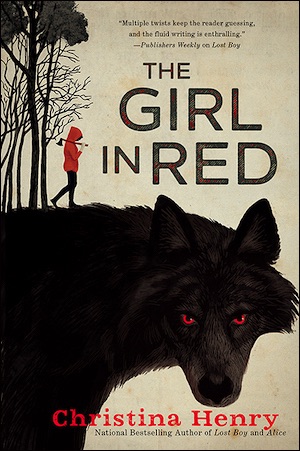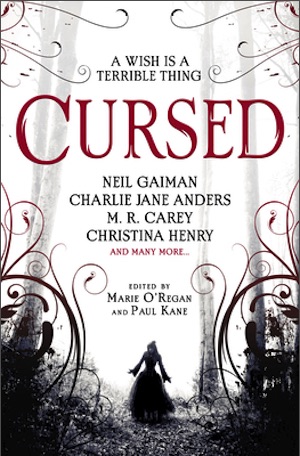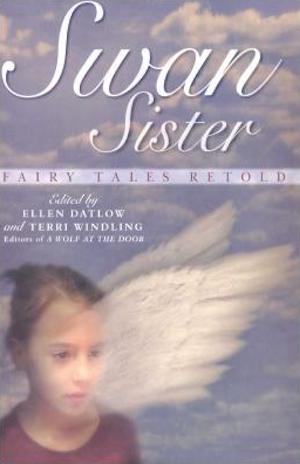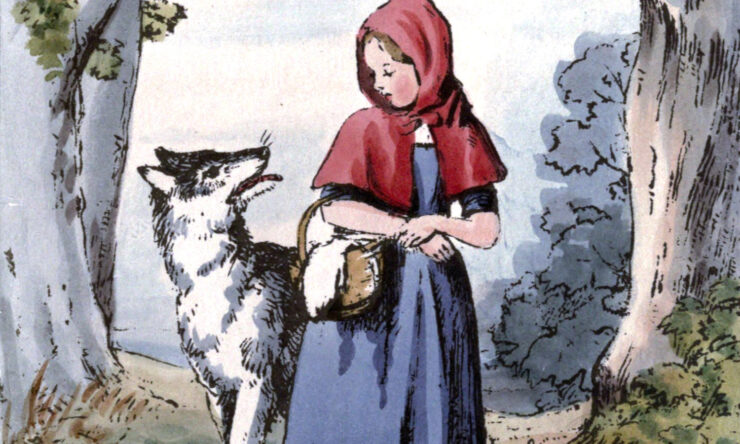“Little Red Riding Hood”… I’ll be honest, y’all—this one has been tricky to write about! There’s a lot of really unfortunate versions of this story out there; historically, it’s been far too easy to blame the heroine for wearing red, for being curious, for leaving the path. But the truth is, Red HAS to leave the path. Not because there wouldn’t be a story otherwise, but because she can’t become who she is meant to be without venturing into the wider world.
We all know the story. Right? Well, here’s my quick and snarky recap:
The titular heroine of “Little Red Riding Hood” may or may not have a name, but she loves the beautiful red hooded cape that her grandmother made for her, so she wears it all the time and becomes nicknamed after her favorite fashion accessory.
One day, Red’s mother sends her on an unchaperoned trip to deliver a basket of goodies to Granny, as the old lady isn’t feeling too well. Mother warns her not to leave the path in the forest, or all sorts of terrible things will happen (what those things are generally remains unclear: just—bad things, don’t ask any more questions!). Red sets off with good intentions, but before long she’s spotted by a wolf who thinks she looks delicious. The wolf stops to introduce himself, and Red gives him just enough relevant information that he plans to make a multicourse meal out of Granny and Red.
First, the wolf convinces Red to leave the path, telling her about a meadow of wildflowers. Red decides a bouquet will make a nice addition for Granny’s care package and strays from the straight and narrow. The wolf makes a beeline for Granny’s house, pretends to be Red, and gobbles up Granny.
Not far behind him, Red arrives at Granny’s with basket and bouquet, and the wolf bids her enter. Now we get into some drastic variants, depending on our intended audience. (Some variants include a strip tease as Wolf-Granny convinces Red to throw all her clothes on the fire as she won’t need them anymore. (Is the red hood included in this? Unclear, depends who you ask. (Okay now I’ve gotten way too far into the parenthetical woods, I’m way off the path.)))
Now, we all know the call and response that ensues:
“What big ears you have!”
“The better to hear you with.”
“What big eyes you have!”
“The better to see you with, my dear!”
“What big teeth you have!”
“THE BETTER TO EAT YOU WITH!”
And then the wolf gobbles Red up. The end.
OR…
And then the wolf gobbles Red up. BUT a crafty woodcutter has followed the wolf and Red, and slices open the wolf before you can say “deus ex machina.” Thus, Red and Granny are extricated from the wolf’s belly, while, for some reason, the wolf himself sleeps through a rather catastrophic surgery. Red, Granny, and Woodcutter then refill the wolf’s belly with rocks, so that he won’t know the difference I guess? Then he wakes up and goes for a swim and drowns, instead of just dying from being hastily cut open, but what can I say… fairy tales are deeply weird.
Red is young, and she is curious; maybe she wants to explore the wider world. She’s kind, seeking out flowers to brighten Granny’s day. Maybe she just wants to leave a path that’s painful to walk upon (old versions tell of the path of pins and needles, ouch). I should note that there are many interpretations of this imagery, such as needlework traditionally being a woman’s task, or the painful path representing the pain of the menstrual cycle, etc. The symbolism tells girls and young women: your path is straightforward, uncomfortable, and if you question it or try to leave it, you will die.
Here are some updates and retellings of the classic tale that transcend many of the traditionally problematic aspects of the story and find new paths for Red to explore.
The Company of Wolves (1984)
Written by Angela Carter and Neil Jordan, directed by Neil Jordan
Based on Carter’s short story of the same title, this trippy dreamscape starts with young modern-day Rosalinda ignoring her family to take what turns out to be a nap from hell, apparently… the toys around her (is that the Stay Puft Marshmallow Man?) add to the atmosphere of her dream of dangerous men and sexual awakening. In the dream, her terrible nagging sister is dead, and she lives in an old village with her parents, but spends much of her time visiting her grandmother, played with delightful sass by Angela Lansbury, who tells her stories of werewolves and how to watch for the signs of their deception.
Stories within stories add to the layers of Rosalinda’s dream, and it’s unclear if she ever wakes up or if the wolves find her in the waking world. Some of the practical effects hold up better than others to a modern eye, but if you are a fan of Little Red Riding Hood and haven’t seen this take, I do recommend a viewing. (And/or go read the story it’s based on!)
Freeway (1996)
Written and directed by Matthew Bright
A stunning black comedy crime movie, this film stands on its own through its use of horror movie-style plotting, recontextualizing and retelling its version of our classic tale with nail-bitingly good pacing. The title sequence makes it clear from the start that we already know this story, using illustrations of Little Red Riding Hood to prime the viewer’s mind. Vanessa is nearly 18 when her mother is arrested, setting her on a quest to find her grandmother instead of being returned once more to foster care. A chance encounter with Bob Wolverton sends her careening off her intended path and changes her life forever. Cleverly written and superbly acted, the gorgeous visuals and various well-considered details remind us constantly of the source material without detracting from the phenomenal character work of young Reese Witherspoon as Vanessa and a slyly horrifying Kiefer Sutherland as Wolverton.
The Girl in Red by Christina Henry

Henry puts Red and her wolves into a post-apocalyptic setting in this suspenseful retelling. Red is, by nature, a planner (practically a prepper) with a scientific mind. When an airborne disease that starts with a cough and leads all too often to death spreads across the country (note: this book was published in June 2019, but this aspect hits much harder now), Red and her family make plans to travel to her grandmother’s house in the country. With the narrative switching between Before and After timelines, Henry successfully leans away from many LRRH while still sticking to the path of the original. The apocalypse itself involves more than “the cough,” as it’s known, but Red’s perspective remains ambiguous enough that it never becomes the point of the story. Rather, Red’s decisions and determination remain at the center of the novel, reminding us that our choices matter, and that it’s as important to be kind as it is to be careful.
“Little Red” by Jane Yolen and Adam Stemple
From Cursed, edited by Marie O’Regan and Paul Kane

This gut-wrenching contemporary retelling takes place in a psychiatric ward, where our young protagonist, Little Red, turns inward, desperately seeking to escape the abusive horrors of the facility. Wolves and grandmothers are equal threats, and as Red journeys further into her own mind, she finds a wolf at the core of her being…and this wolf is on her side. Told in Yolen’s masterful prose, with imagery and symbolism drawn from the oldest known versions of the story, this one will haunt you.
“Lupe” by Kathe Koja
From Swan Sister: Fairy Tales Retold edited by Ellen Datlow and Terri Windling

In this retelling, the grandmother in the woods isn’t Red’s grandma; rather she is Old Blanca, known to be a witch, and Red is Lupe, a young woman whose family is struggling to bear the loss of her little brother Teodoro. Her mother withdraws into grief, and Lupe finds solace in the forest, where she can sit for hours and watch the animals play, avoiding her older brother and her parents’ heavy silence. When her mother bids her go to Old Blanca, Lupe accepts that challenge, no longer frightened by the forest, and although she does meet a kind of wolf as part of this challenge, Old Blanca is pleased by her courage and persistence, and grants their family a healing boon. The encounter changes Lupe and although she sheds some of her childhood innocence along the way, she also grows into a smarter and kinder woman because of her experience.
Bonus: “Red Writing Hood” by Lesh Karan
This luscious poem, which you can read over at Strange Horizons, is as much about the act of writing and embodying a character as it is a retelling, yet still succeeds in capturing the essence of our tale by forging its own unique path.
What are your favorite versions of Little Red Riding Hood’s story? Please share in the comments!










